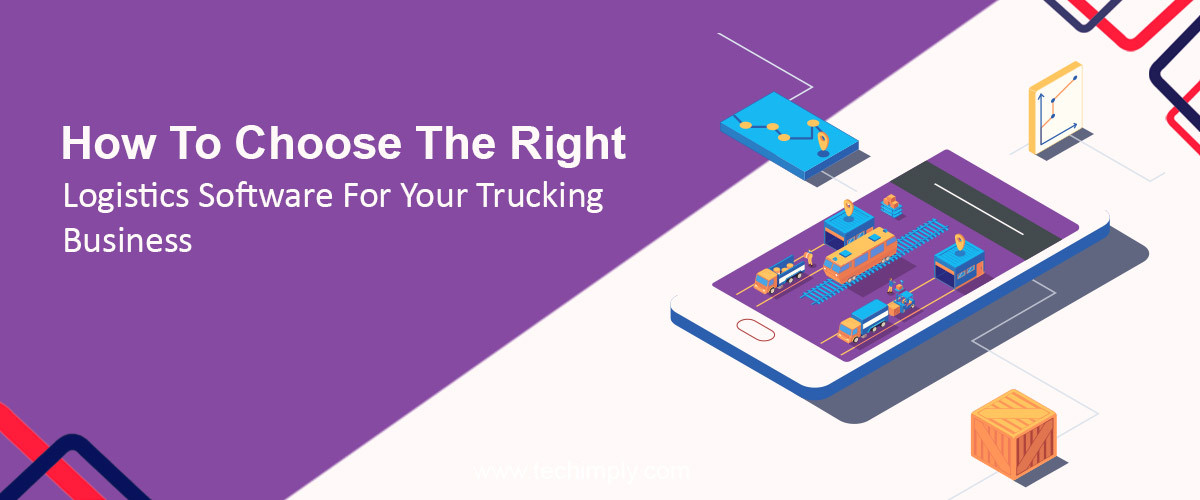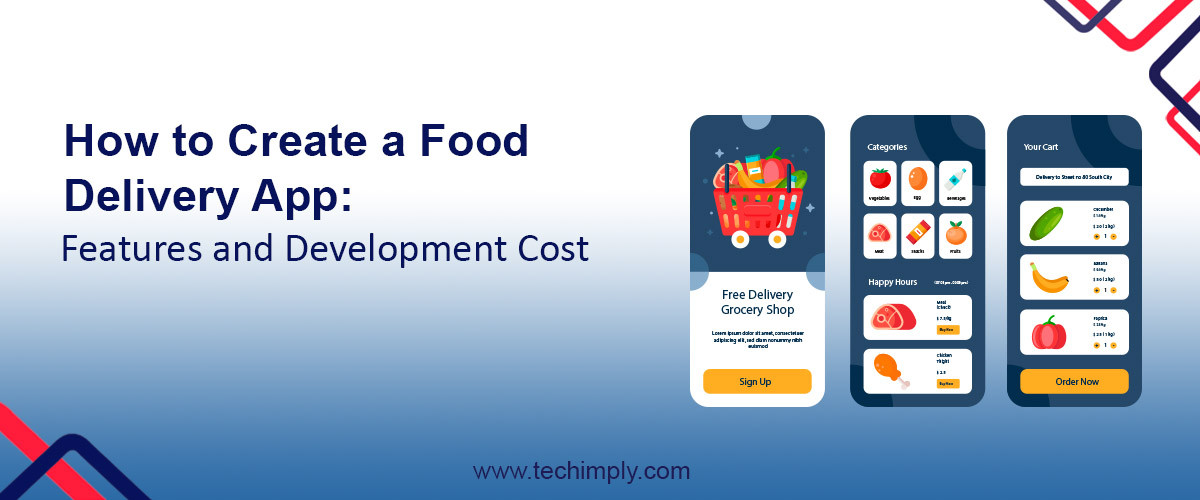Success in the trucking industry hinges on more than having a dependable truck fleet. Efficient logistics management is the key, where logistics software steps in. Therefore, choosing the right logistics software can profoundly impact your business's prosperity.
This comprehensive guide will discuss 10 essential steps and considerations when picking the right logistics software for your trucking business.
Understanding The Role Of Logistics Software
Before we guide you through the selection process, it's essential to grasp the role of logistics software in the trucking industry.
Logistics software, often called transportation management software (TMS), helps trucking companies plan, execute, and improve various aspects of their operations.
This includes planning routes, optimizing loads, managing orders, and providing real-time tracking.
Improved Efficiency
Logistics software brings automation into various processes within your trucking business strategy and provides advanced digital documentation to effectively manage your transportation and logistics operations.
For example, it can handle tasks such as order processing, load planning, and route optimization. Automating these manual tasks reduces the time and effort needed to complete them, leading to faster operations and a lower chance of errors.
As an illustration, when a shipment order is input into the system, the software can swiftly calculate the most efficient route, assign it to the most appropriate truck, and generate all the necessary paperwork. This streamlined approach not only saves time but also enhances the accuracy of your operations.
Cost-Efficiency
By taking into account variables such as traffic conditions, weather, and delivery schedules, the software can find the most efficient route for each shipment. This optimization reduces fuel usage and lessens the wear and tear on vehicles, resulting in lower maintenance expenses.
Furthermore, optimizing resource allocation ensures that each truck operates at maximum capacity. This translates to fewer empty miles and increased earnings per trip.
Enhanced Customer Service
Logistics software offers real-time tracking (time tracking software) and provides timely updates on shipments, a feature greatly appreciated by customers. When customers can monitor their shipments and receive accurate, up-to-date delivery information, it leads to higher satisfaction levels.
The software can automatically alert customers about unexpected delays or issues, allowing them to make necessary adjustments to their plans. This enhances communication and service quality, fostering long-term customer loyalty.
Modern logistics software has the capability to efficiently gather and process extensive data from your operations, including information regarding delivery times, fuel usage, and vehicle performance. Access to this data offers valuable insights into your business, enabling you to recognize patterns, trends, and areas that require improvement. This data-driven approach empowers you to make strategic, well-informed decisions for your flooring store Oshawa.
Informed Decision-Making
Modern logistics software has the capability to efficiently gather and process extensive data from your operations, including information regarding delivery times, fuel usage, and vehicle performance. Access to this data offers valuable insights into your business, enabling you to recognize patterns, trends, and areas that require improvement. This data-driven approach empowers you to make strategic, well-informed decisions.
For instance, by analyzing historical delivery data, you can pinpoint routes or regions where delays frequently occur and take corrective measures. Moreover, you can leverage this data to negotiate more favorable terms with suppliers or fine-tune your pricing strategies. Essentially, logistics software transforms data into actionable intelligence, allowing you to enhance the efficiency of your trucking operations continuously.
Now that you understand logistics software's significance let's talk about the 10 steps to select the right solution for your trucking business.
Step 1: Understand Your Business Requirements And Objectives
The first step in choosing the right logistics software involves gaining a thorough understanding of your company's unique needs and long-term goals. Take the time to assess the challenges you face and identify areas that could benefit from improvement. Consider these key factors:
- Fleet size: Determine whether you manage a small or large fleet.
- Cargo type: Identify the primary goods you transport, whether they are perishable, hazardous, or general freight.
- Geographic reach: Define the scope of your routes, whether they are local, regional, or national.
- Existing challenges: Recognize the operational obstacles you currently encounter and which specific issues need addressing.
- Future expansion: Decide if you have plans to grow your fleet or services in the foreseeable future.
By gaining a clear understanding of your requirements and goals, you can effectively narrow down your options and focus on logistics software solutions that align with your trucking business's specific needs.
Step 2: Exploring And Assessing Software Options
Once you've identified your needs, it's time to explore logistics software to find the right match. During this phase, consider the following factors:
-
Features And Capabilities
Different logistics software solutions come with varying features. Check if the software includes essential functions like:
- Route optimization: Does it provide tools to streamline routes, reducing mileage and fuel costs?
- Load planning: Can it efficiently allocate loads to trucks while accounting for weight and space limitations?
- Real-time tracking: Does it offer live tracking for shipments and vehicles?
- Order management: Is there support for order processing, including order entry, status updates, and invoicing?
- Reporting and analytics: Are there robust tools for data analysis and performance assessment?
- Integration: Does the software seamlessly work with your existing systems and hardware?
-
User-friendliness
The ease of using the software is crucial. It should be intuitive and easily understandable for your team. Look for solutions that provide comprehensive training and sufficient support resources.
-
Scalability
Consider whether the software can grow alongside your business. Ensure it can adapt to accommodate a burgeoning fleet and increase data volume as your operations expand.
-
Customer support
Evaluate the quality and responsiveness of customer support provided by the software vendor. Prompt assistance can prove vital in resolving issues and minimizing downtimes.
-
Pricing structure
Comprehend the software's pricing structure, encompassing subscription fees, setup costs, and additional charges. Make sure that it aligns with your budgetary constraints.
Step 3: Seek Recommendations And Read Reviews
When gathering insights, don't hesitate to contact industry peers and seek their opinions. Additionally, diving into user reviews can offer invaluable perspectives on how the software performs in real-world scenarios. You can connect with fellow trucking companies and logistics professionals to gain insights into their experiences with specific software solutions.
Online reviews and forums are also fantastic resources for obtaining unbiased feedback.
Step 4: Request Demos And Trials
Before reaching a final decision, consider requesting demonstrations or trials of the logistics software that has made it to your shortlist. This hands-on experience provides an opportunity to evaluate the software's user-friendliness and alignment with your business processes. During these demos, be sure to focus on the following aspects:
-
Ease of use: Assess whether the software is user-friendly and your team can adapt seamlessly.
-
Performance: Ensure the software meets your operational requirements without slowdowns or glitches.
-
Support: Evaluate how responsive the vendor is during the demo phase.
Step 5: Explore Integration Possibilities
Efficient logistics management often entails seamlessly blending logistics software with other essential business systems, like accounting software, GPS tracking, or warehouse management systems. Ensuring the software you opt for can readily integrate into your existing technology infrastructure is vital.
Step 6: Assess Return On Investment (ROI)
Evaluate the potential return on investment (ROI) the logistics software can bring. Consider the immediate cost savings and the enduring advantages it can offer, such as heightened efficiency, lowered fuel expenses, and enhanced customer satisfaction.
Step 7: Make A Well-Informed Choice
You can now make a well-informed decision after conducting thorough research, gathering recommendations, and scrutinizing various software options. Select the logistics software that best aligns with your trucking business's unique needs, objectives, and financial constraints.
Step 8: Put It Into Action And Train Your Team
Now that you've selected your software, it's time to implement it. Collaborate closely with your software provider to smoothly integrate the new system. Don't forget to provide thorough training to your team to ensure they harness the software's full potential.
Step 9: Keep A Close Eye And Make Refinements
Once the software is up and running, it's not a set-it-and-forget-it situation. Continuously monitor its performance and gather input from your team. Adjust and fine-tune processes and settings to get the most out of the software.
Step 10: Stay Informed About Updates And Enhancements
Logistics software is ever-evolving. Stay in the loop regarding software updates and new features that could bolster your operations. Regularly assess how the software is performing to ensure it remains aligned with your evolving needs.
Make The Right Choice
The choice of the proper logistics software is pivotal for your trucking business. It's a strategic move that can significantly enhance efficiency and competitive edge. By following these steps and tailoring your selection to your business's unique demands, you'll make a savvy decision that streamlines your operations and trim costs, positioning your trucking venture for success in a fiercely competitive industry.






